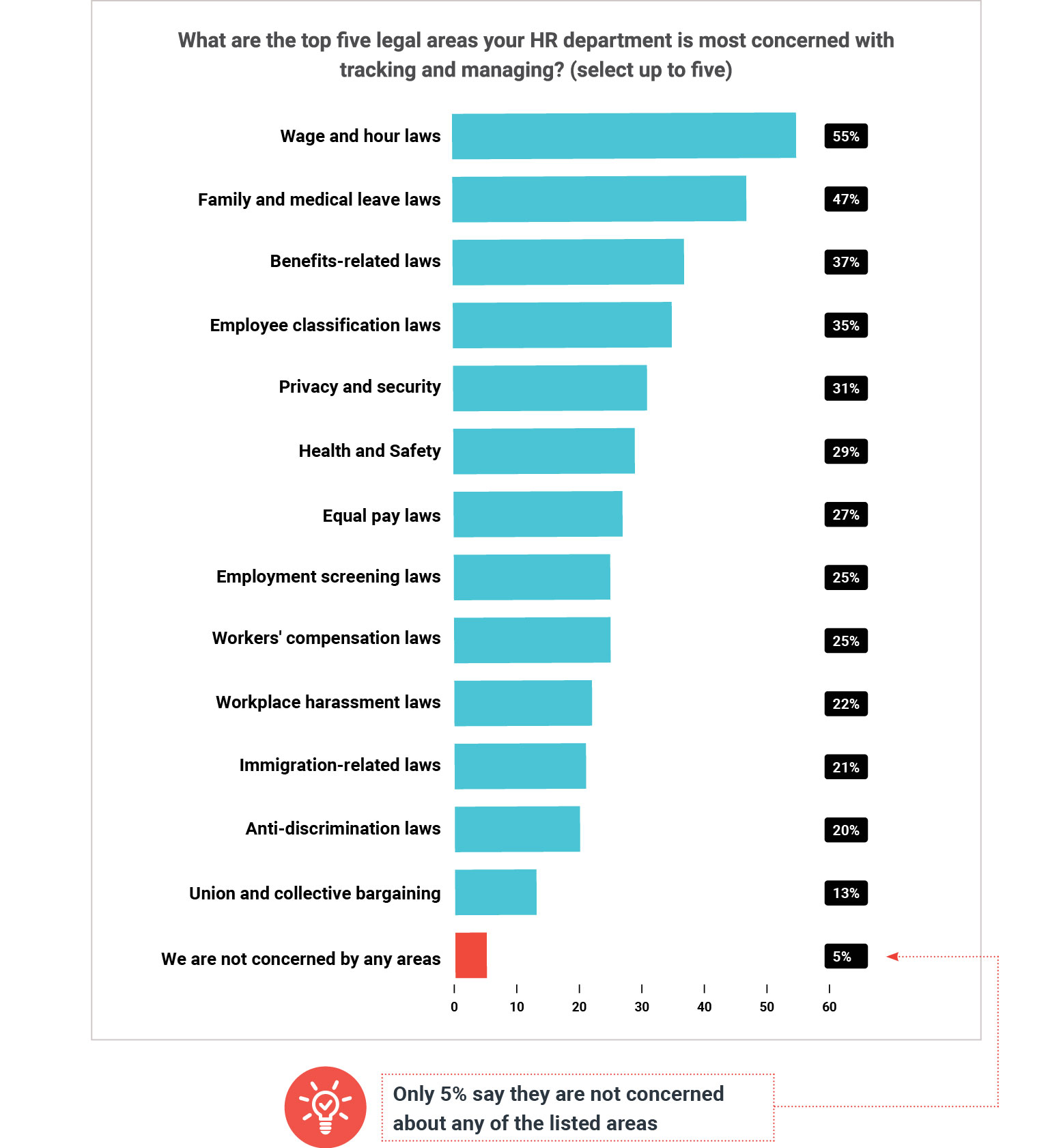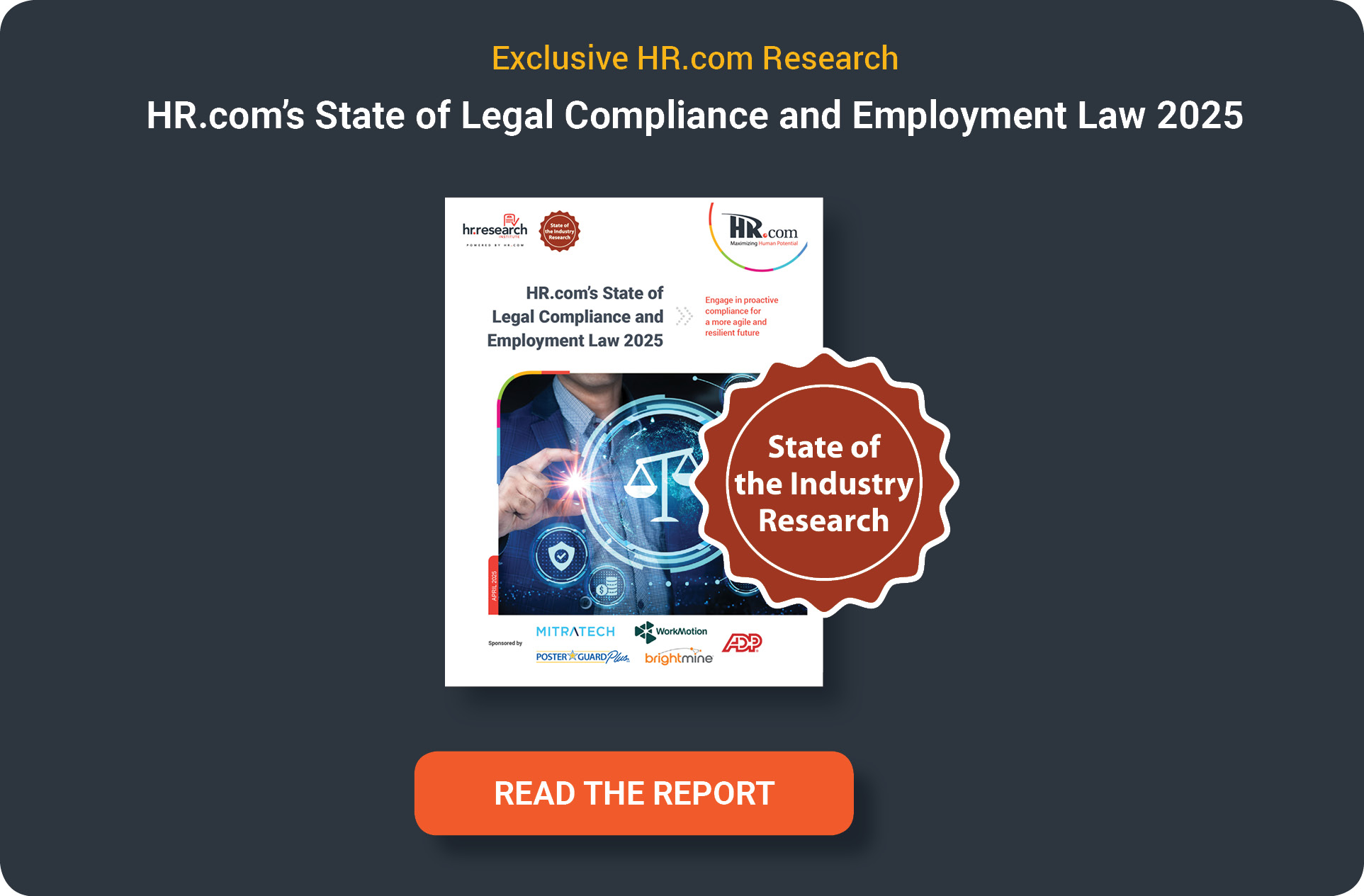HR.com's State of Legal Compliance and Employment Law 2025
Engage in proactive compliance for a more agile and resilient future
Posted on 05-05-2025, Read Time: 6 Min
Share:
.jpg)
As per HR.com's latest research, only one-third of responding organizations take a proactive approach to labor law compliance, 22% do not take proactive steps, 20% have outdated processes, 16% have only partially documented procedures, and 9% remain purely reactive.
It’s difficult to stay on top of key issues due to challenges such as the growing scope of federal and state HR-related mandates, changing interpretations of laws, and a lack of internal resources. As legal demands intensify, organizations that fail to modernize risk will face greater legal, financial, and reputational exposure.
The research report, ‘State of Legal Compliance and Employment Law 2025’, analyzes the gaps in compliance processes, risk management, and audit frequency, addresses top compliance concerns, including pay, leave, and benefits laws, and examines how resource and funding shortfalls impact readiness.
Here are the major findings from the study:
Finding #1: Wage and Hour Laws Top HR Compliance Concerns
As per the report, while 78% of companies feel prepared for compliance challenges, only a third have truly proactive systems in place. This disconnect between perception and reality underscores why 34% of organizations faced enforcement actions last year alone.This gap in preparedness becomes even clearer when examining top compliance priorities. Wage and hour laws (56%), family/medical leave (47%), and benefits regulations (37%) continue to dominate human resources (HR) concerns, with pay transparency laws (33%) emerging as a growing challenge. Yet despite these known pain points, resource allocation tells a different story. Just 49% of organizations adequately fund compliance initiatives, while only 46% provide sufficient training—a dangerous imbalance when considering that HR teams spend up to 50% of their workweek on compliance tasks.

Finding #2: AI Is Expected to Reshape Legal and Compliance Processes Significantly
Herein lies the paradox: while 62% of organizations recognize AI’s potential to transform compliance monitoring, only 27% plan adoption within two years. This hesitation comes at a cost. Companies with mature compliance programs—those leveraging automation and integrated systems—report 84% better security and 68% more efficient reporting than their peers. The message is clear: technological investment isn’t just beneficial; it’s becoming table stakes for risk management.
Finding #3: Potential Lawsuits and Fines Are the Top Two Concerns Driving Compliance Efforts
The consequences of inaction are too significant to ignore. With 69% of organizations fearing lawsuits and 61% anticipating heavy fines, compliance can no longer be treated as an afterthought. Forward-thinking companies are already redefining their approach by:- Implementing quarterly (rather than annual) compliance audits
- Allocating dedicated budgets for compliance technology
- Developing AI governance frameworks to address ethical concerns
- Creating cross-functional compliance task forces
Your Next Steps
The path to proactive compliance starts today. Download the full HR.com report to access:- Industry-specific compliance benchmarks
- AI adoption roadmaps
- Budget planning templates
- Compliance maturity assessment tools
Error: No such template "/CustomCode/topleader/category"!


